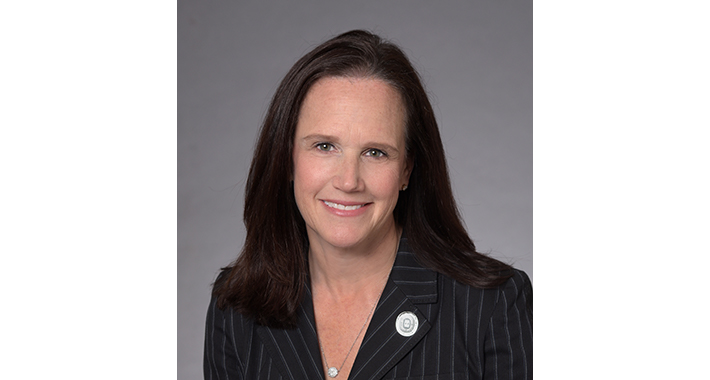

Jill Baren, MD, did everything right. She gowned, gloved, and masked when seeing patients. She changed out of her scrubs, laundered them immediately, and used the wash station in the mudroom off the garage before entering her house. She wore a mask to go grocery shopping. Still, on March 18, Dr. Baren was diagnosed with Coronavirus Disease 2019 (COVID-19).
“I always assumed that I would get it,” said Dr. Baren, President of the American Board of Emergency Medicine. “I’m an emergency physician. How would I not get it? I was just hoping I wasn’t going to get that sick.”
But sick, she was. Dr. Baren had symptoms for nearly a month. They started with nasal congestion and sore throat. She attributed the muscle aches and severe back pains to “overdoing it at the gym.” Then the high fever, fatigue, and headache kicked in. That’s when she called Employee Health and Infectious Diseases at the Hospital of the University of Pennsylvania, where she is an attending physician and Professor of Emergency Medicine, Pediatrics, and Medical Ethics at the Perelman School of Medicine, University of Pennsylvania. Dr. Baren was tested for COVID-19 the next day.
The day after getting a positive result, her symptoms worsened. Dr. Baren now had aching chills and uncontrollable shaking, loss of appetite, nausea, abdominal cramps, and diarrhea. She was sleeping 16 hours a day.
Nine days later, Dr. Baren went to the emergency department where she works because she was dizzy, dehydrated, and couldn’t eat anything. The looks she received from the team—people she worked with for years—was startling, Dr. Baren recalled. “They looked at me like I could die,” she said. Dr. Baren’s X-ray showed pneumonia and she received three liters of fluid and anti-nausea medications. After that, Dr. Baren went home as she was not deemed critically ill. With the help of Tylenol and anti-nausea medications, she got through the remainder of her illness.
Dr. Baren returned to work on April 10, feeling a little more empowered and a little less apprehensive having fought off the virus. She also registered to participate in a clinical trial for a plasma donation protocol for people who are critically ill with COVID-19. Dr. Baren views it as an opportunity to help others and contribute to the science about the novel coronavirus. “I feel less concern and anxiety, but it’s still there,” she said. Much of the concern is that she could inadvertently bring the virus home on her clothes and equipment, which could be a risk to her family, hence the mudroom-based “hot zone” with a designated clothing hamper and washing machine.
Dr. Baren is also much less anxious about getting critically ill from the virus. Despite that, she still takes full precautions for two reasons. One is that the immunity pattern is not well established. The second reason is to protect all the trainees, colleagues, and nurses with whom she works. “As a role model and attending physician, I have to be wearing the proper protective equipment and following the same approach as everyone else,” she said.
With more protocols to follow, more information to learn and assimilate, and workflow changes to implement, the job has become that much harder, she said. “There is a huge cognitive load right now for health care workers—physicians, nurses, and all the support staff—but it’s important that they pay attention, keep their energy level up, and never let their guard down,” added Dr. Baren, who was the former Chair of Emergency Medicine at Penn Medicine and has just been named Provost and Vice President of Academic Affairs at University of the Sciences in Philadelphia.
Regarding some patients, Dr. Baren is concerned that they are not seeking the care they need because they are afraid of being in a hospital setting and possibly contracting the virus. In fact, emergency departments across the country are reporting a 40% to 50% drop in visits. She urged anyone who has symptoms that are progressing, especially rapid breathing and shortness of breath, to seek an evaluation or a conversation with their doctor. “The concern is that people are experiencing hypoxia and developing silent pneumonia,” Dr. Baren said. People who have no symptoms or a low level of symptoms and want to get tested out of curiosity should first speak with their doctor to avoid unnecessarily exposing others, she added.
When patients do come to the emergency department, they can see that all health care workers are taking incredible precautions. When Dr. Baren walks into a patient’s room, she apologizes for her appearance but explains that it’s for their protection. “You’re not even a human face to patients right now. You have goggles, a mask, gloves, and a gown on,” she said. “It’s very dehumanizing to have your doctors and nurses walk in the room looking like that.”
Still, Dr. Baren is confident that the country will get through this pandemic by keeping informed and calm. “That is what we learned from our training as physicians, especially emergency physicians,” she said. “I think there is solidarity in that thought.”
© 2020, American Board of Medical Specialties
Read the Latest Issue of the ABMS Insights Newsletter
Subscribe to ABMS Insights Newsletter
-
Read More:
- ABMS Insights |
- COVID-19 |
